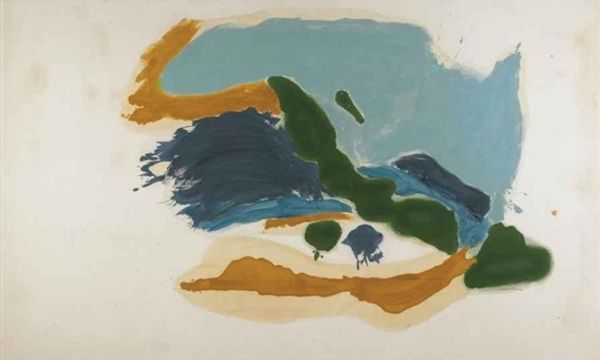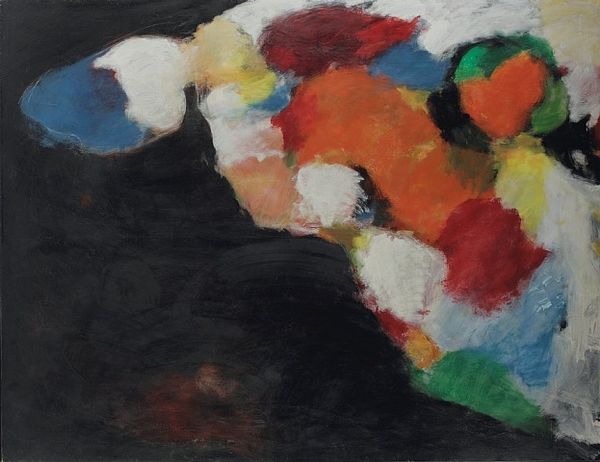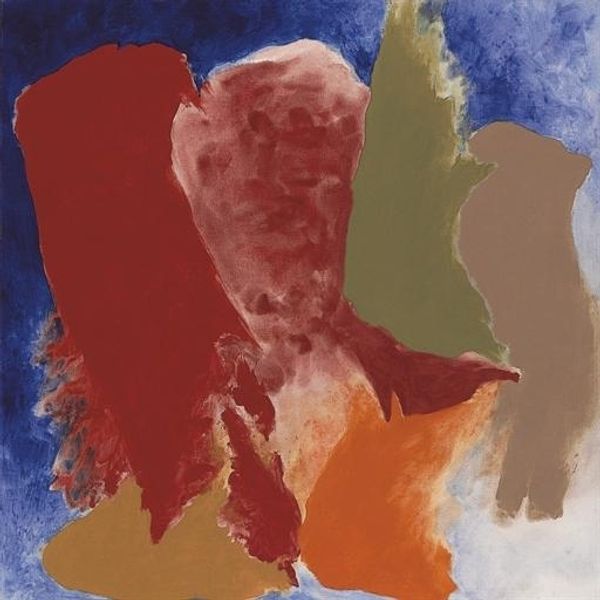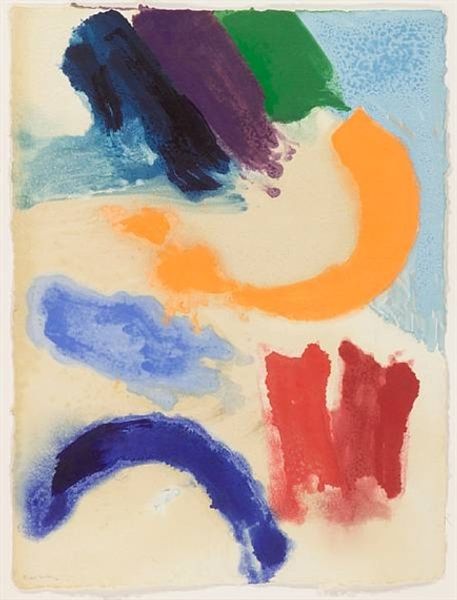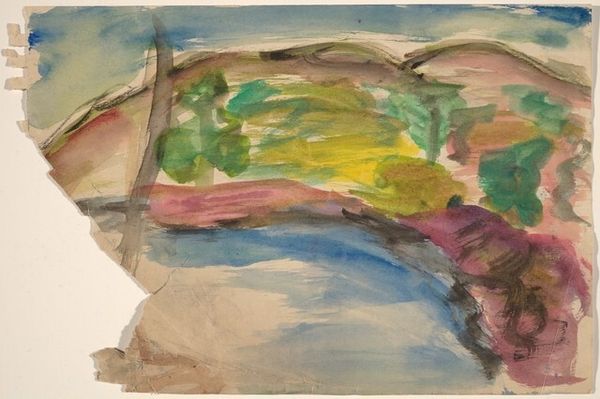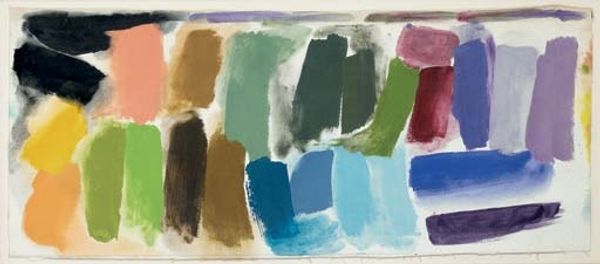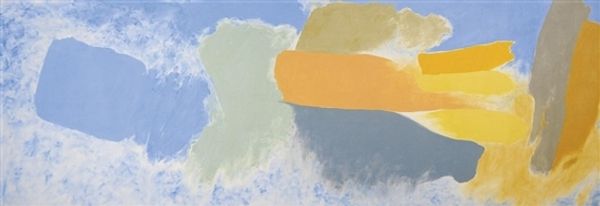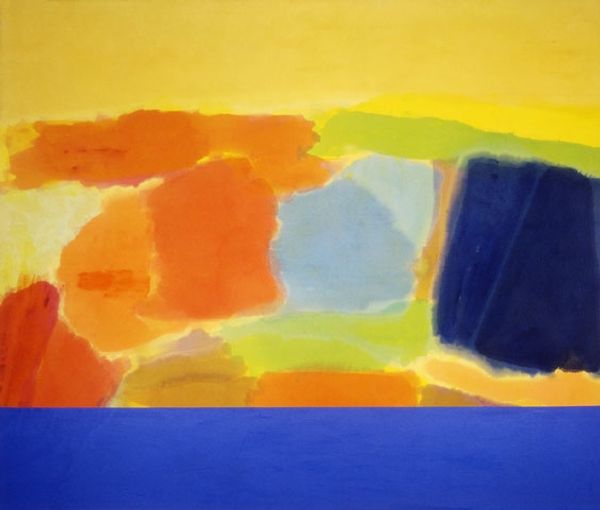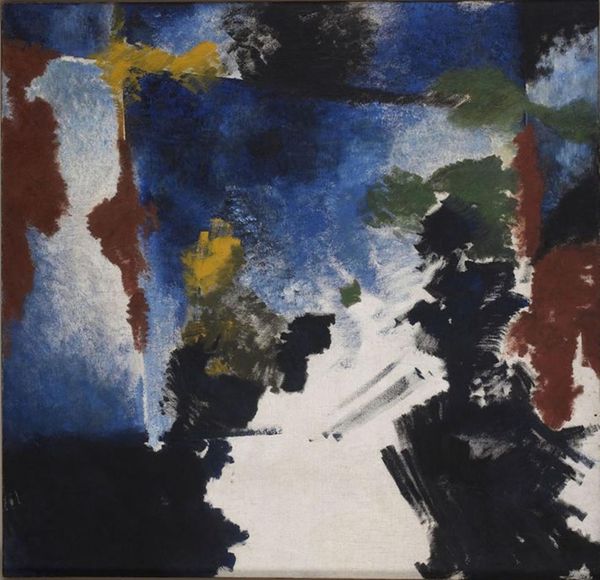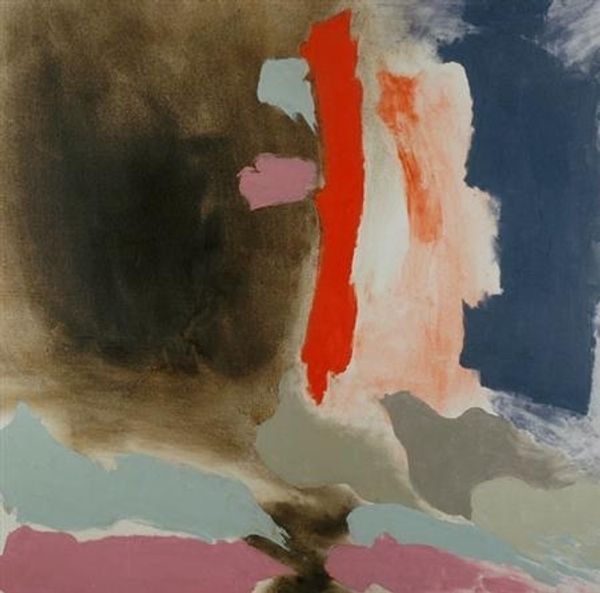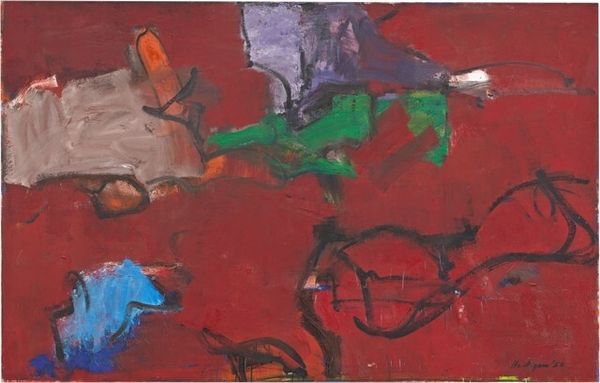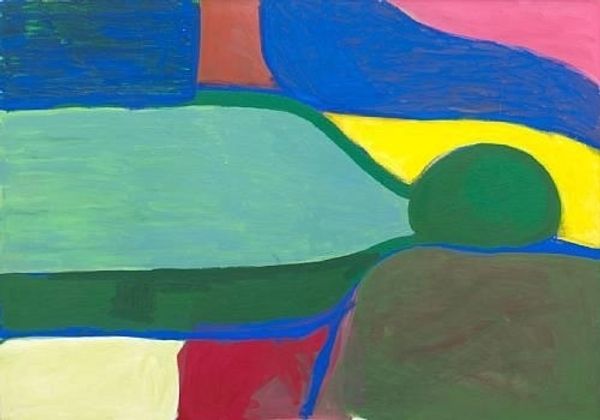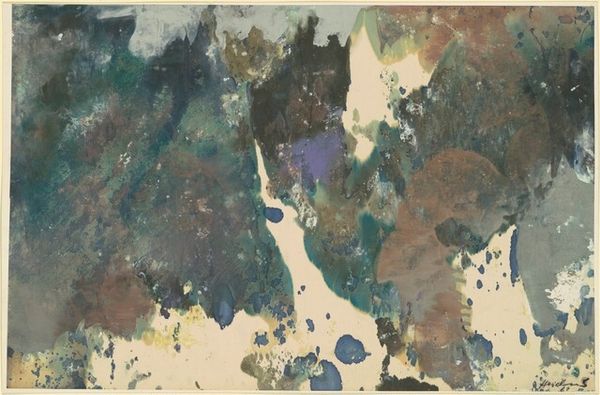
Copyright: Friedel Dzubas,Fair Use
Curator: Standing before us is Friedel Dzubas's "Sudden," a vibrant acrylic on canvas completed in 1976. Editor: It has such a breezy, ethereal quality. Like gazing at landforms through a rain-streaked window. Curator: Exactly, the acrylic allows for this stunning visual effect; it creates layers of overlapping hues. Dzubas uses thinned paint applied in broad washes that build color, so while distinctly "strokes," they feel boundless and unconfined. This, along with his use of relatively inexpensive acrylics allowed Dzubas to create paintings at such an immense scale during a time when many artists relied on costlier oil paints. Editor: These decisions must be considered in their historical context, right? Late Modernism was a period where artists interrogated the material limitations of their media and the very structures of art production itself. Who had access to which materials, whose stories were being told? How were such narratives curated? Curator: Definitely. It’s worth looking into his processes closely. Some accounts state Dzubas worked on unprimed canvases allowing the pigments to penetrate deeply into the fabric which gave them an exceptionally luminous, soft character as we see here. In terms of craft, his labor-intensive method defied the idea of effortless artistic genius by instead revealing a commitment to the intrinsic qualities and possibilities afforded by these tools of expression! Editor: The gesture toward indeterminacy that arises resonates with me especially now, as the idea of historical absolutes and social hierarchies come under increased scrutiny. What's particularly potent is that even while using abstraction as his chosen visual language, the sheer spectrum Dzubas embraces conveys a plurality reminiscent, if not representative of the messy human condition. How might considerations of identity, whether individual or collective, inform future readings? Curator: Well said. His commitment challenges norms concerning art as commodity, but simultaneously provides grounds for discussing not just painting—rather it calls attention both inwardly toward technique yet further afield examining systems capable shaping meaning, Editor: Precisely. Considering materiality and broader sociocultural elements will enable us—indeed require—nuance when viewing art across histories and geographies. Curator: I’ll consider it too and pay more close attention on that front especially material studies impacting broader art histories—thanks largely your astute contextualizing as part collaborative understanding involving "Sudden." Editor: It's a dialogue as timeless yet timebound which hopefully continues expanding toward diverse viewership as awareness does—thanks!
Comments
No comments
Be the first to comment and join the conversation on the ultimate creative platform.
